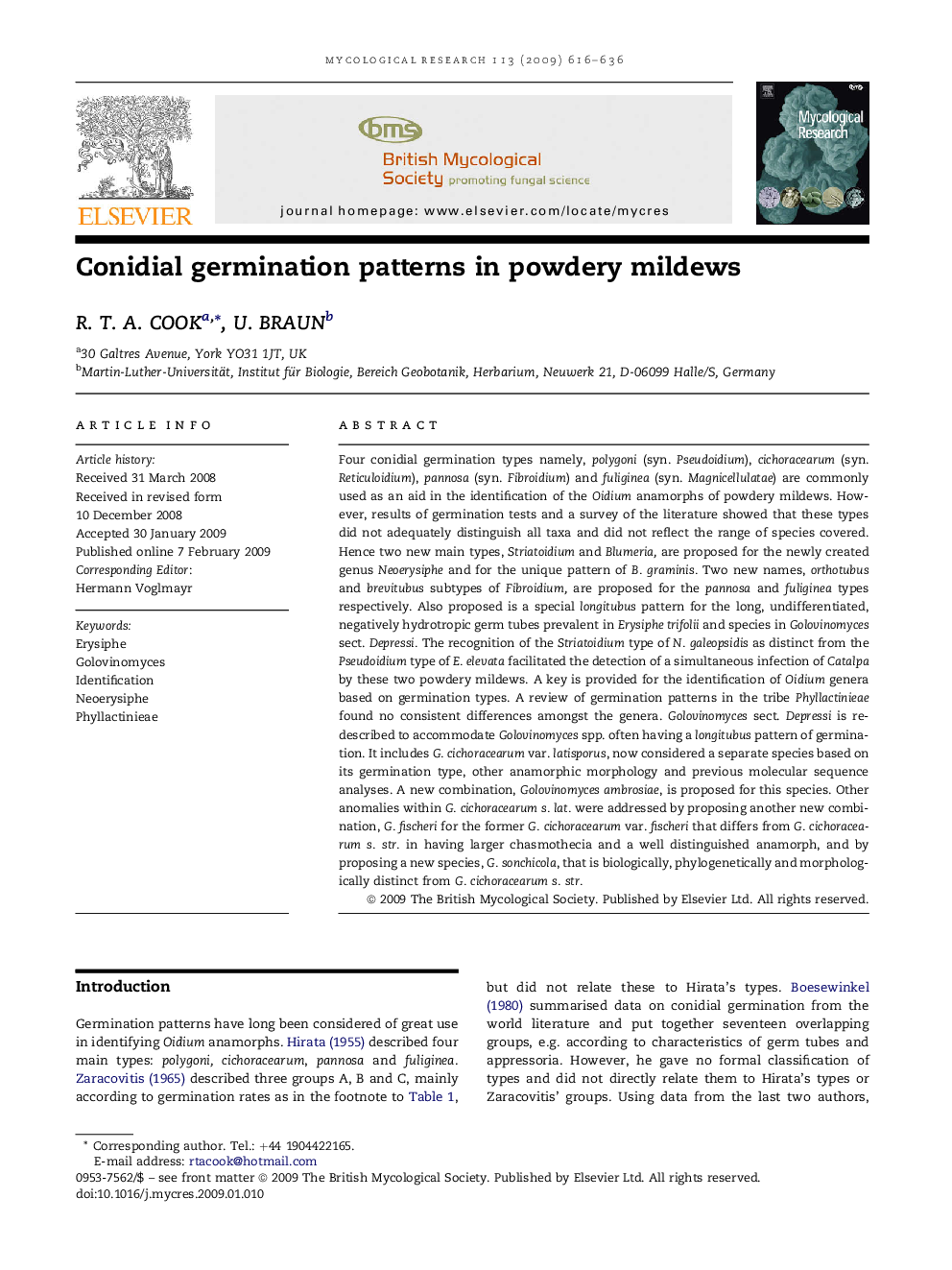| کد مقاله | کد نشریه | سال انتشار | مقاله انگلیسی | نسخه تمام متن |
|---|---|---|---|---|
| 4357616 | 1300095 | 2009 | 21 صفحه PDF | دانلود رایگان |

Four conidial germination types namely, polygoni (syn. Pseudoidium), cichoracearum (syn. Reticuloidium), pannosa (syn. Fibroidium) and fuliginea (syn. Magnicellulatae) are commonly used as an aid in the identification of the Oidium anamorphs of powdery mildews. However, results of germination tests and a survey of the literature showed that these types did not adequately distinguish all taxa and did not reflect the range of species covered. Hence two new main types, Striatoidium and Blumeria, are proposed for the newly created genus Neoerysiphe and for the unique pattern of B. graminis. Two new names, orthotubus and brevitubus subtypes of Fibroidium, are proposed for the pannosa and fuliginea types respectively. Also proposed is a special longitubus pattern for the long, undifferentiated, negatively hydrotropic germ tubes prevalent in Erysiphe trifolii and species in Golovinomyces sect. Depressi. The recognition of the Striatoidium type of N. galeopsidis as distinct from the Pseudoidium type of E. elevata facilitated the detection of a simultaneous infection of Catalpa by these two powdery mildews. A key is provided for the identification of Oidium genera based on germination types. A review of germination patterns in the tribe Phyllactinieae found no consistent differences amongst the genera. Golovinomyces sect. Depressi is re-described to accommodate Golovinomyces spp. often having a longitubus pattern of germination. It includes G. cichoracearum var. latisporus, now considered a separate species based on its germination type, other anamorphic morphology and previous molecular sequence analyses. A new combination, Golovinomyces ambrosiae, is proposed for this species. Other anomalies within G. cichoracearum s. lat. were addressed by proposing another new combination, G. fischeri for the former G. cichoracearum var. fischeri that differs from G. cichoracearum s. str. in having larger chasmothecia and a well distinguished anamorph, and by proposing a new species, G. sonchicola, that is biologically, phylogenetically and morphologically distinct from G. cichoracearum s. str.
Journal: Mycological Research - Volume 113, Issue 5, May 2009, Pages 616–636